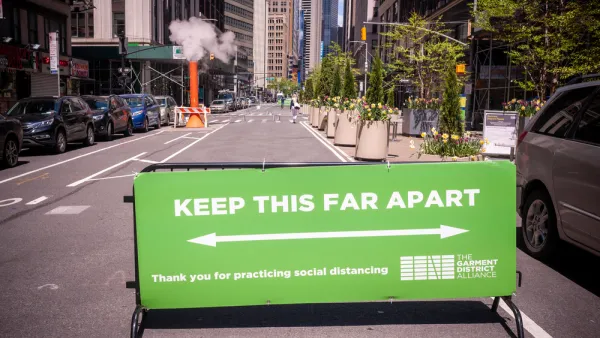Public participation is an important part of the urban planning process, says Michael Hooper, as "it improves project outcomes and the likelihood of project success." But lately, some prominent people are saying that it hinders the planning process.
There has always been an ongoing debate whether public participation is necessary in the planning field. Recent criticism against participation has come from prominent urbanists like Tom Campanella and Andrés Duany. They argue that it only slows down the planning process.
What is needed is a return to a time when decisions were made more quickly, Duany argues. He claims that "...basically, we can't get anything done." Campanella has said that "...just as China could use more of the American gavel of justice and democratic process, we could certainly use a bit more of that very effective Chinese sledgehammer."
Both have come to these conclusions by "focusing on the construction phase of projects – whether they are built and how quickly," said Hooper.
On the other hand, Hooper quotes folks who tout the benefits of participation, who say that it has "positive spillovers through fostering democratic norms and development of social capital, both of which are important societal objectives."
FULL STORY: Public Participation: More than an “Orgy of Public Process”

National Parks Layoffs Will Cause Communities to Lose Billions
Thousands of essential park workers were laid off this week, just before the busy spring break season.

Retro-silient?: America’s First “Eco-burb,” The Woodlands Turns 50
A master-planned community north of Houston offers lessons on green infrastructure and resilient design, but falls short of its founder’s lofty affordability and walkability goals.

Delivering for America Plan Will Downgrade Mail Service in at Least 49.5 Percent of Zip Codes
Republican and Democrat lawmakers criticize the plan for its disproportionate negative impact on rural communities.

Test News Post 1
This is a summary

Test News Headline 46
Test for the image on the front page.

Balancing Bombs and Butterflies: How the National Guard Protects a Rare Species
The National Guard at Fort Indiantown Gap uses GIS technology and land management strategies to balance military training with conservation efforts, ensuring the survival of the rare eastern regal fritillary butterfly.
Urban Design for Planners 1: Software Tools
This six-course series explores essential urban design concepts using open source software and equips planners with the tools they need to participate fully in the urban design process.
Planning for Universal Design
Learn the tools for implementing Universal Design in planning regulations.
EMC Planning Group, Inc.
Planetizen
Planetizen
Mpact (formerly Rail~Volution)
Great Falls Development Authority, Inc.
HUDs Office of Policy Development and Research
NYU Wagner Graduate School of Public Service



























